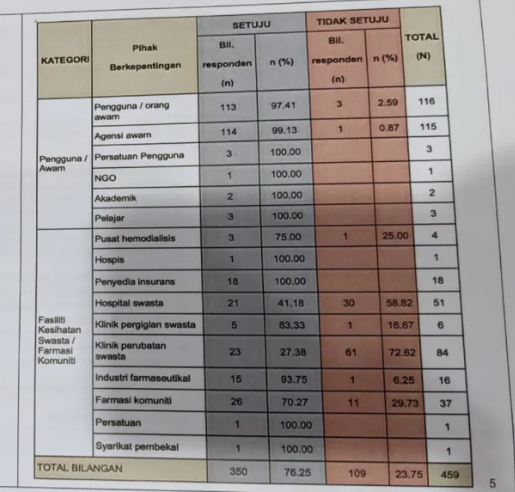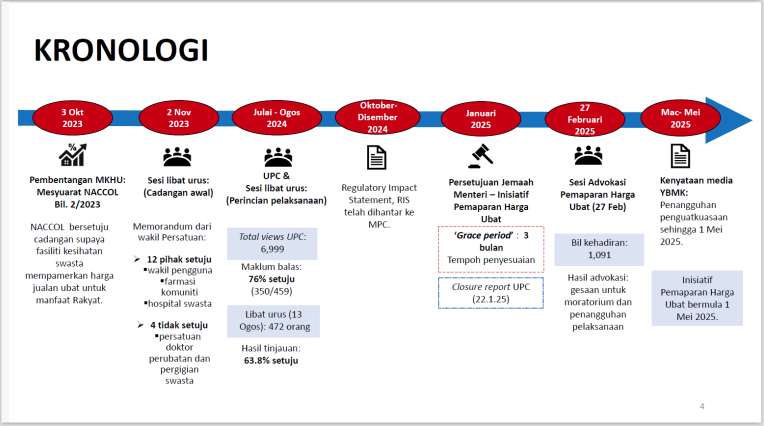The Ministry of Health (MOH) emphasizes that drug price transparency aligns with public demand. Learn how this initiative impacts healthcare access and affordability.
Introduction
In a significant move towards enhancing healthcare accessibility and affordability, the Ministry of Health (MOH) has announced new regulations mandating drug price transparency. This initiative reflects the collective voice of the populace, aiming to empower patients with clearer information about medication costs and to foster a more competitive pharmaceutical market.

The MOH’s Commitment to Transparency
The MOH’s recent directive requires all private healthcare providers to display drug prices openly. This policy, effective from [insert effective date], is designed to eliminate hidden costs and allow patients to make informed decisions regarding their healthcare expenditures. Yahoo News Malaysia
According to a statement from the MOH, this move is in direct response to public demand for greater transparency in drug pricing. By aligning with the will of the people, the MOH aims to build trust and ensure that healthcare services are both accessible and affordable for all citizens.
Global Trends in Drug Price Transparency
The push for drug price transparency is not unique to our nation. Globally, there has been a growing movement towards making healthcare costs more transparent. For instance, in the United States, the Hospital Price Transparency rule, effective from January 1, 2021, mandates hospitals to provide clear pricing information online about the services they offer. CMS
Similarly, California’s Prescription Drug Cost Transparency Program (CTRx) requires drug manufacturers to report specified price increases and new drug introductions, ensuring that consumers are informed about the costs associated with their medications. HCAI

Implications for Patients and Healthcare Providers
Empowering Patients
With transparent pricing, patients can now compare drug costs across different providers, enabling them to make cost-effective choices without compromising on quality. This empowerment is expected to lead to increased patient satisfaction and trust in the healthcare system.
Encouraging Competitive Pricing
Healthcare providers and pharmaceutical companies are now incentivized to offer competitive pricing to attract and retain patients. This competition is anticipated to drive down drug prices, making medications more affordable for the general population.
Enhancing Healthcare Planning
Transparent drug pricing allows for better budgeting and financial planning for both patients and healthcare institutions. Patients can anticipate their medical expenses, while providers can streamline their pricing strategies to align with market expectations.
Challenges and Considerations
While the move towards drug price transparency is commendable, it is not without challenges:
Data Accuracy and Standardization
Ensuring that the displayed prices are accurate and standardized across all platforms is crucial. Discrepancies in pricing information can lead to confusion and mistrust among patients.
Protecting Commercial Confidentiality
Pharmaceutical companies may have concerns about revealing proprietary pricing information, fearing that it could affect their competitive edge. Balancing transparency with the protection of commercial interests is a delicate task that requires careful policy crafting.
Implementation and Compliance
Monitoring compliance among healthcare providers and enforcing the new regulations will require robust systems and resources. The MOH must ensure that there are clear guidelines and support mechanisms in place to facilitate smooth implementation.CHIRblog

The Road Ahead
The MOH’s initiative is a significant step towards a more transparent and equitable healthcare system. By aligning policies with public demand, the ministry demonstrates its commitment to patient-centric care.
Moving forward, continuous engagement with stakeholders, including patients, healthcare providers, and pharmaceutical companies, will be essential to refine and enhance the transparency framework. Regular reviews and updates to the policy will ensure that it remains effective and responsive to the evolving healthcare landscape.


